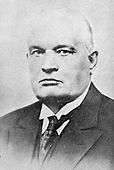Estonian parliamentary election, 1920
Estonian parliamentary election, 1920

|
|
|
|
|
|
|
Parliamentary elections were held in Estonia between 27 and 29 November 1920, the first held under the 1920 constitution. 100 deputies were elected into the new Riigikogu by party lists in 10 regions, by which one party or electoral bloc could put up several lists in one region. Seats were still distributed on the state level, where votes for different lists were summed up by their political affiliation and then seats distributed using d'Hondt formula. Thereafter seats for one party or bloc were distributed between different lists of that political force using the same formula.
Results
| Party |
Votes |
% |
Seats |
+/– |
|---|
| Estonian Labour Party | 99,030 | 21.0 | 22 | –8 |
| Farmers' Assemblies | 97,825 | 20.8 | 21 | +13 |
| Estonian Social Democratic Workers' Party | 80,211 | 17.0 | 18 | –23 |
| Estonian Independent Socialist Workers' Party | 50,119 | 10.6 | 11 | +4 |
| Estonian People's Party | 48,927 | 10.4 | 10 | –15 |
| Christian Democratic Party | 35,420 | 7.5 | 7 | +2 |
| Central Committee of Tallinn Trade Unions | 24,849 | 5.3 | 5 | New |
| German-Baltic Party | 18,444 | 3.9 | 4 | +1 |
| Russian National Union | 4,744 | 1.0 | 1 | 0 |
| Economic Group | 4,948 | 1.1 | 1 | New |
| Russian People's Union | 3,876 | 0.8 | 0 | New |
| Citizens of the Republic of Estonia at Lake Peipsi | 1,344 | 0.3 | 0 | New |
| Men of Our Mats | 614 | 0.1 | 0 | New |
| Fighting Army of the Republic of Estonia | 221 | 0.0 | 0 | New |
| Jewish Minority | 211 | 0.0 | 0 | New |
| Jewish National Minority | 184 | 0.0 | 0 | New |
| Christian Group | 168 | 0.0 | 0 | New |
| Eligible voters of Kuigatsi Parish | 48 | 0.0 | 0 | New |
| Total | 471,228 | 100 | 100 | –20 |
| Registered voters/turnout | 653,000 | 72.2 | – | – |
| Source: Nohlen & Stöver[1] |
References
- ↑ Nohlen, D & Stöver, P (2010) Elections in Europe: A data handbook, pp574–586 ISBN 978-3-8329-5609-7
- II Riigikogu valimised : 5.-7. mail 1923 / Riigi Statistika Keskbüroo = Élections au parlement : de 5.-7. mai 1923 / Bureau Central de Statistique de l'Estonie - Tallinn : Riigi Statistika Keskbüroo, 1923 (Tallinn : Tallinna Eesti Kirjastus-Ühisus ; Narva : M. Minis)
